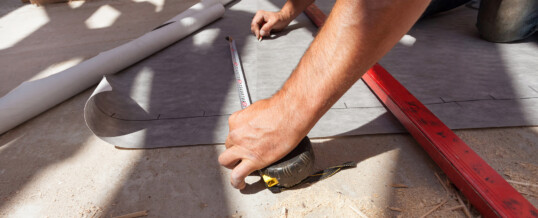
You may not know, but underneath your home, there may be an unoccupied, narrow area called a crawl space. It’s similar to a basement, but smaller, so there’s not much you can do in this space.
This space can be left empty, but leaving it empty can lead to several issues. Your home’s crawl space can influence the air quality inside your home as moisture can buildup in this space.
To prevent the buildup of moisture, consider protecting it. You need to consider crawl space encapsulation vs. vapor barrier as these are popular methods used to seal a crawl space.
Crawl Space Encapsulation vs. Vapor Barrier Introduction
Crawl space foundations are built underneath homes to provide access to different areas of the home such as the heating and cooling systems and plumbing in case there’s a need to make repairs. Some homeowners use their crawl space to store items.
While a crawl space does have certain functions, this space does have the potential to cause damage to the home. One of the major issues that crawl spaces can contribute to is the buildup of moisture. It can be quite challenging to control the buildup of moisture, especially in climates where hot-humid weather abounds.
The buildup of moisture can cause damage, especially when water creeps into the crawl space. This can contribute to the growth of mold, which as you may know is bad for your health as it can cause major health problems. The buildup of moisture will affect the air quality within the home.
To protect your indoor air quality, you should consider installing crawl space encapsulation or vapor barrier. Each offers pros and cons that you need to be familiar with.
Encapsulation
One of the ways to prevent problems in a crawl space is to encapsulate the space. A crawl space that is not encapsulated is an uncontrolled environment. Such an environment will have different temperatures and humidity levels throughout the day. If you decide to encapsulate your crawl space, you can gain control of the environment.
Encapsulation of a crawl space involves sealing it with white plastic. The entire crawl space will be completely sealed with this material going up to the foundation walls. This provides full protection from top to bottom, so you can rest assure that water is kept out.
If you encapsulate your crawl space, 100% of the ground will be covered with a white plastic. This will create a seal of the seams, junction, and vents in the crawl space.
You if go with this route, you will need to have an air conditioning method in your crawl space. You can choose from one of the following methods – dehumidifier, small exhaust fan, or a small amount of air supply from an HVAC system. For your information, the most common method used is the dehumidifier.
Encapsulating your crawl space is beneficial for several reasons. You can have better air quality as the sealing of the crawl space will control the environment within this area. You may not know this, but 40-60% of the air you breathe in your home comes from the crawl space. This is shocking, but true so having a clean crawl space is important.
A second benefit you can experience by encapsulating your crawl space is potential savings on your home energy bill. An encapsulated crawl space can help to reduce the energy use in your home. Of course, a great benefit of having an encapsulated crawl space is less risk for mold problems.
Vapor Barrier
The other method that you can choose to control the environment in your crawl space is the vapor barrier. Vapor barrier installation involves the process of laying down a thin black plastic sheet (called a visqueen) across the crawl space floor. The thickness of this sheet can be anywhere from 4 to 6 mm.
With this method, only the crawl space floor is sealed; therefore, this is not referred to as a sealed system. The walls, columns, and vent are not sealed. Because the vent is not sealed, you will need to install a dehumidifier.
The issue with this method is that it can cause moisture to seep into the crawl space. If this method is used, there is no need for the installation of any air conditioning methods. You will just need to install a dehumidifier.
The cost for the installment of a vapor barrier is less than that of encapsulation. The storage space within your crawl space with a vapor barrier is better than that of encapsulation.
What Method Should You Choose?
Now that you have read about both methods, you may be asking yourself, “Which is better, the vapor barrier or encapsulation?” The answer to this question is dependent on several factors including your budget and your needs.
After considering all the factors, the encapsulation method is better than the vapor barrier because it seals off more area in the crawl space. Encapsulation will seal off the holes, cracks, and vents so you can rest assured that there will be less moisture in the crawl space as the material that covers the crawl space is 12 mil and 20 mm thick.
Which to Pick
If you have a crawl space, you should consider sealing it off. A crawl space can have moisture built up that can lead to major problems. There are two methods commonly used to seal a crawl space. This is a contest between crawl space encapsulation vs. vapor barrier.
If you have any questions about crawl space encapsulation or vapor barrier, please visit our contact us page.
ShareMAY
